Minarets of Prominence: Ottoman and Seljuk
How and when the minaret travelled
“Are not the white minarets and the mysterious old houses, the storks on the roof, the beggar at the fountain, the very cobble-stones and above all, the deep blue sky and the star-strewn night the very essentials of magic and romance?” (Mazower, p.190)
Join us for our four-part Ramadan series as we take a closer look at the origins of the Minaret, its different styles, features and its remarkable history from the Ottoman period to the Mughal and Timurid Empire.
Before the minaret arrived in the contemporary European imagination as the embodiment of exotic mysticism, this unique structure had already travelled the world simultaneously with the spread of Islam.
The earliest minarets were former Greek watchtowers and the towers of Christian Churches. Architecturally, they first appeared in the Great Mosque of Damascus, built by the Umayyad Caliphs who ruled the Muslim world from 661-750 CE. They were originally placed in the middle of a wall opposite the qibla wall.
Unfortunately, the original structures have not survived, and today's minarets of various styles date from the 9th century.
Sivas & Kayseri
Even the highly decorated minarets of the Seljuk period with their geometric and calligraphic designs were built with grandeur at smaller mosques and mosque complexes. These can be seen as older monumental mosques in Sivas, located in the Eastern part of Central Anatolian Türkiye and Kayseri, located in the South West.
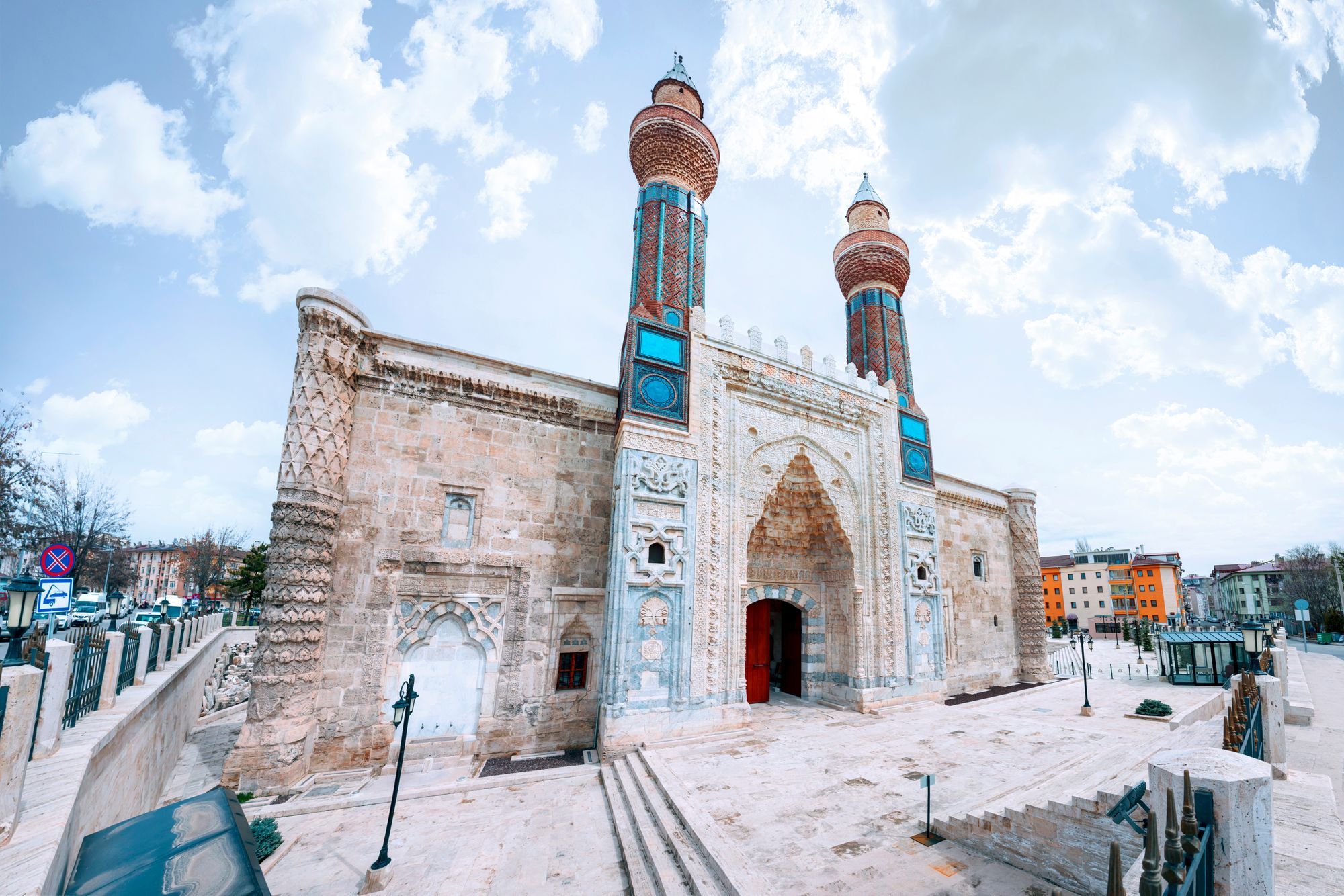
Edirne
Edirne was the second capital of the Ottoman Empire before Istanbul, but the city's majestic piece of Ottoman architecture stems from Sultan Selim II's reign (1566-1574) and is the work of the most famous architect of the Ottoman era, Sinan.
The four slender minarets of the Selimiye Mosque (Selimiye Camii) are towering 71 metres high. Historians think it likely that at the time of their construction, they were the tallest mosque minarets in the world. Panels of calligraphy and geometric designs of the arch borders are illuminated from the hundreds of windows inside, drawing in the visitors' attention on the upper levels and dome of the prayer hall, thus creating a tranquil sense of immense space.

Konya
The evolution of the Turkish minaret can be seen in minarets such as Bukhara Kalyan in Konya, distinguished for its use of brick patterns and inscriptions. The Ince and Edirne Selimiye minarets were built by the Turks of Central Asia, all typical of the Anatolian Seljuk period.
Istanbul
Travellers who had previously seen these dazzling structures in Thessaloniki - which resembled the Ottoman minarets of Istanbul, saw extremely tall and narrow towers, designed to complement the domed roofscapes so popular with Ottoman architects.
In the capital, Istanbul, the number of minarets indicated the status of a mosque’s founder - particularly if it was the Sultan - and this design was simplified and copied in provincial centres.
They also helped to identify the skyline of Istanbul as seen from the European centre of Galata, just across from the Golden Horn. This is how the minaret evolved into an expression of imperial cultural achievement and religious piety.
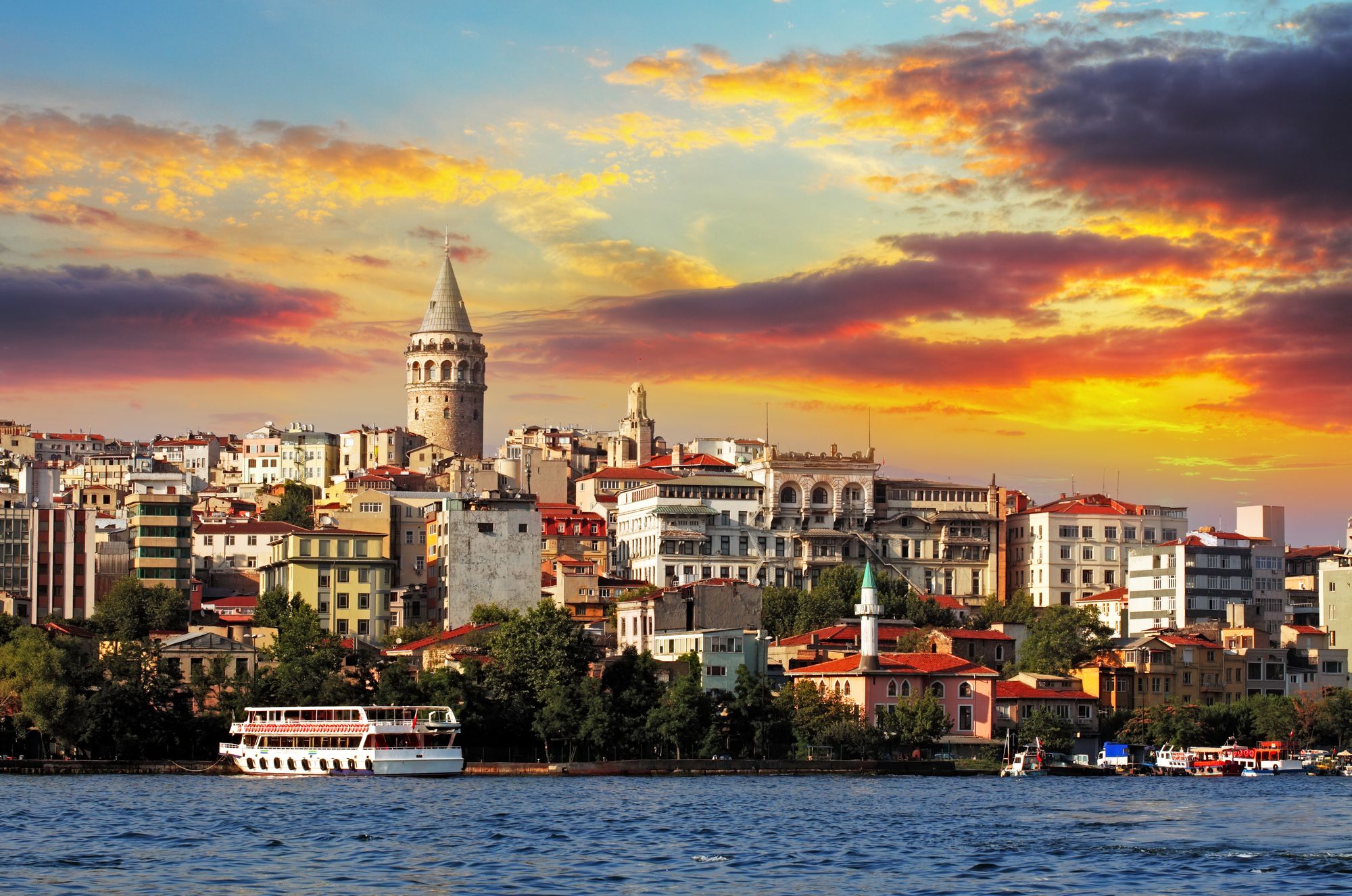
This impressive flexibility of expression is another relic bearing to the huge distances travelled by Islam in the mediaeval period, bringing it into contact with a variety of cultures, contributing to its appeal in areas as far as Morocco and China.
Süleymaniye Cami
Another significant mosque that occupies a hilltop position, is the Süleymaniye Mosque (Süleymaniye Camii). It is one of Istanbul's most well-known profiled landmarks. Built during the reign of Sultan Süleyman I, ("Süleyman the Magnificent" reigned from 1520 to 1566), this grand structural project was one of the famous works of the architect Sinan. Although replaced in tourist affections by the Blue Mosque, the prayer hall's vast domed interior, with its Iznik tile clad mihrab, stained-glass windows, and elaborately ornate woodwork detail creates a serene setting.
The surrounding buildings of the original mosque complex have all been restored, hence a visit here offers the chance for one to imagine how the great Ottoman mosques of the city would have functioned in imperial times. The buildings originally housed a soup kitchen, a medrese, an inn and a hospital.
The grounds of the mosque are also home to the finely decorated tombs of Sultan Süleyman I and his wife, Haseki Hürrem Sultan (also known to historians as Roxelana).

Blue Mosque
Türkiye’s most famous minarets stand majestically in Istanbul's Sultanahmet Mosque (Sultanahmet Camii), commonly known as the Blue Mosque. It sits at the centre of Sultanahmet, the city’s old town district, with its domes and minarets, a direct architectural rival to Hagia Sophia, overlooking the opposite side of Sultanahmet Square.
Built by Ottoman architect Sedefkâr Mehmet Ağa during the reign of Sultan Ahmet I 1603-1617), the mosque was a seal of Ottoman imperial power, boasting a controversial six minarets (equalling the same number as Makkah’s grand mosque at the time). 21,000 Iznik tiles were used to clad the interior of the massive prayer hall. The mosque gained its name from the prevalent blue tones used on the tiles. The mosque is a popular Istanbul tourist attraction and is often crowded with visitors during the day, particularly in summer. For a quieter visiting experience, go in the evening. Tourists and visitors may enter the prayer hall from the south door, not the main entrance.

Rüstem Paşa Mosque
Another Ottoman project built by the architect Sinan is the Rüstem Paşa Mosque (Rüstem Paşa Camii), financed by Sultan Süleyman I's grand vizier Rüstem Paşa. It is located near the Spice Bazaar in the Hasırcılar Çarşısı (Straw Mat Weavers Market) in the Tahtakale neighbourhood of the Fatih district of Istanbul.
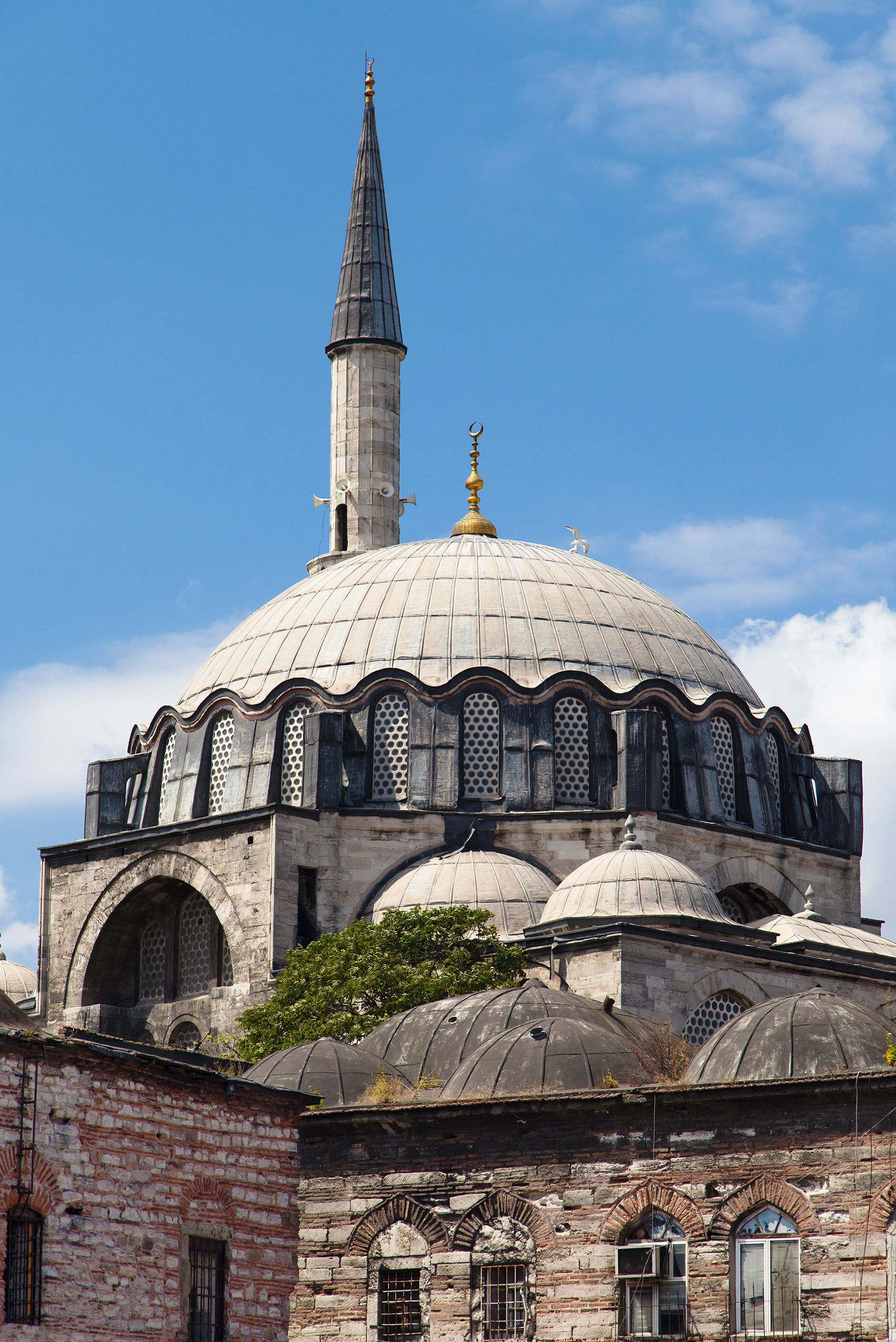
The Iznik tile panels, with their floral and geometric designs, adorn both the outer wall and the interior of the mosque. This mosque is built more on a human scale and upon closer examination, the focus is on the amazing delicate artwork, rather than the amount of tile work. The mosque is set above street level, so it is not easily seen by pedestrians.
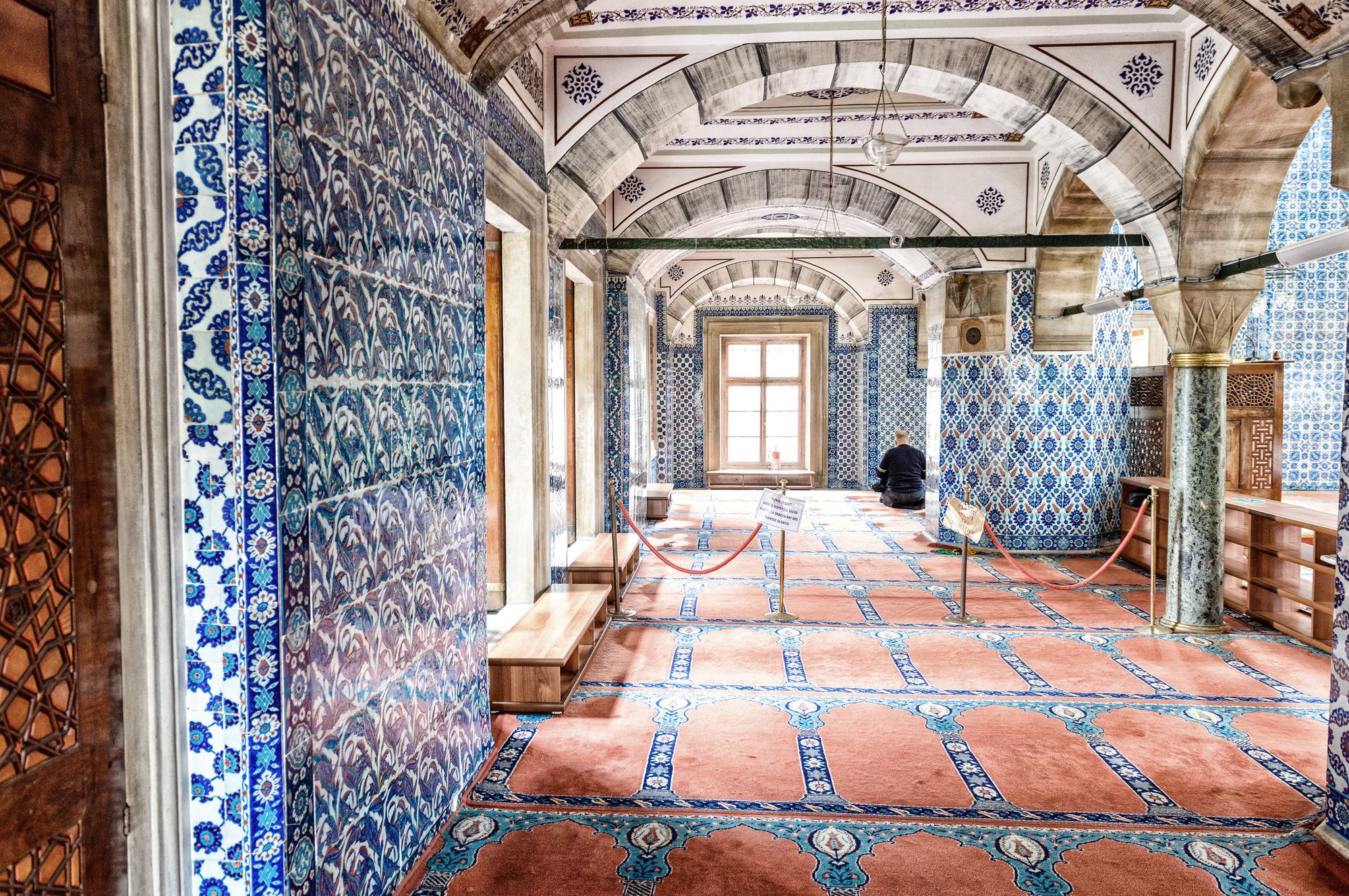
Bursa
Bursa was the first capital of the Ottoman Empire, and holds a wealth of early-Ottoman architecture. The city's most famous building, the Grand Mosque (Ulu Camii), was built by Sultan Bayezid I (reigned 1389-1402) in 1399 and has a distinct Seljuk style. It sits right in the heart of town, surrounded by a vast bazaar area of well-restored caravanserais, which mark Bursa's important historical trade routes.
The metal roof has twenty domes. This architectural feature is a result of the sultan's over-ambitious promise to build twenty mosques. After defeating the Crusaders, he built these mosques instead.
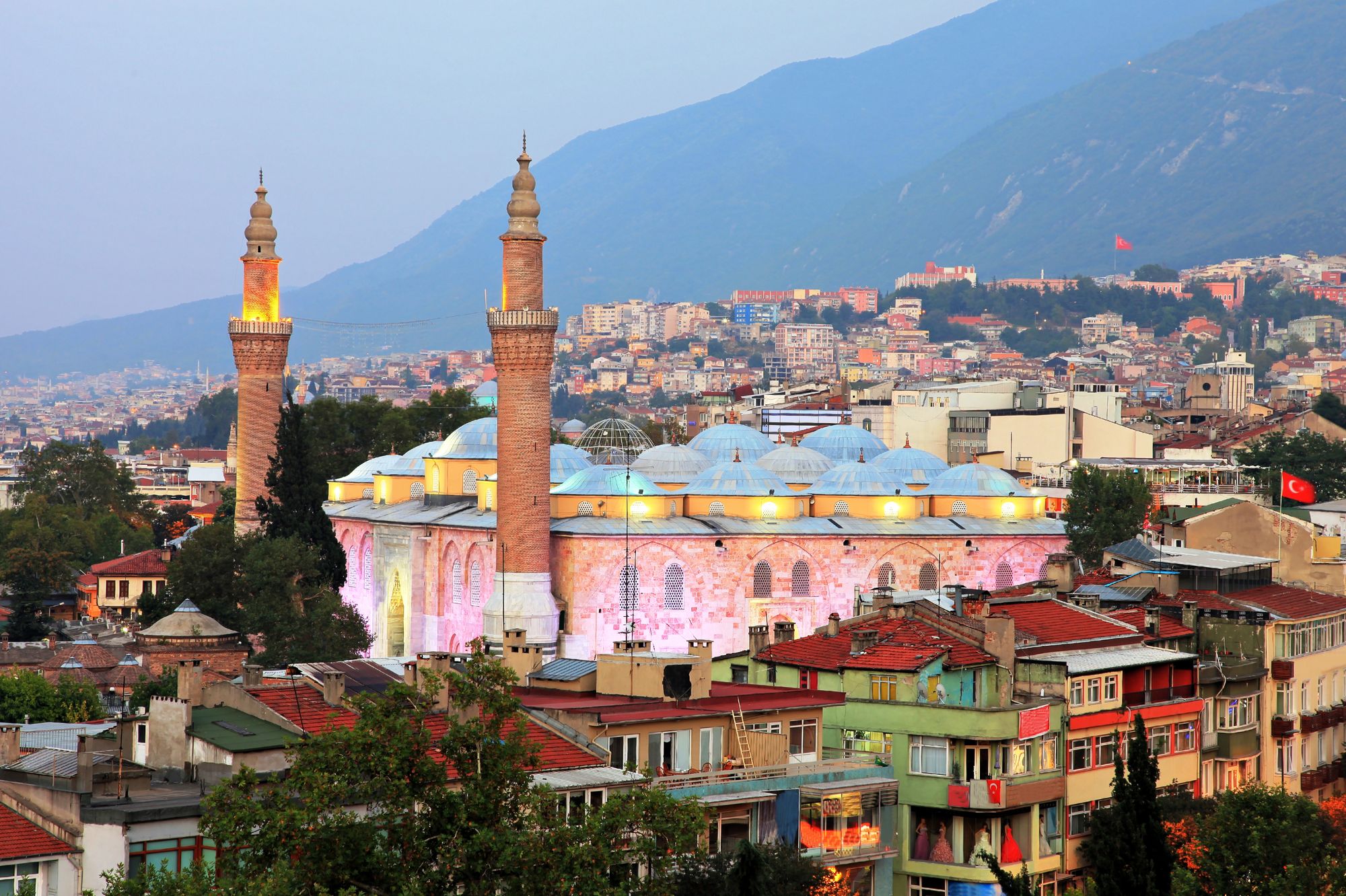
Adana
The Sabanci Merkez Mosque (Sabancı Merkez Camii), surrounded by six 99-metre-high minarets, is Adana's major landmark.
Built in 1998, this is one of Türkiye's most impressive modern mosques, with it being one of the largest mosques in the entire Middle East, with a capacity of over 28,000 worshippers.
Its architecture and interior design are very much in line with the traditional Ottoman style. Calligraphy panels and Iznik tile work are used as decoration amid the rugged masonry of the massive prayer hall, lit by multiple windows from above bank of the Seyhan River and its soaring 54-metre high dome.

Amasya
Amasya Sultan Bayezid II Mosque (Sultan Beyazıt II Camii) has been overlooking the Yeşilırmak River in the centre of town since 1486.
Many of its additional buildings, which made up the original mosque complex, are still standing today amid the mosque's garden, including the structures that formerly functioned as a medrese and soup kitchen.
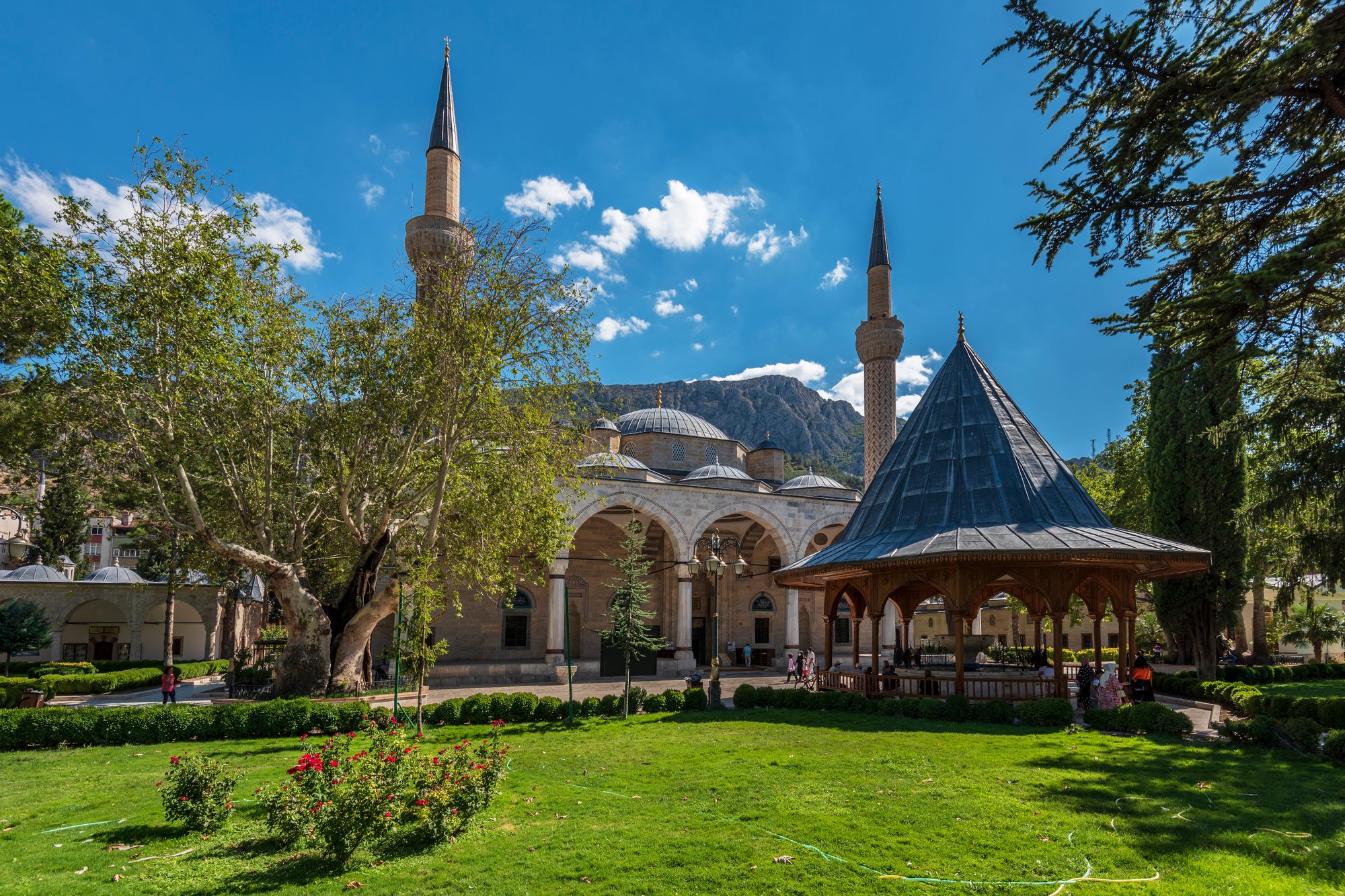
The prayer hall holds a particularly ornate minbar of carved wood and a white marble mihrab and impresses with the sense of sophistication conveyed by the bright, soaring double-domed interior.
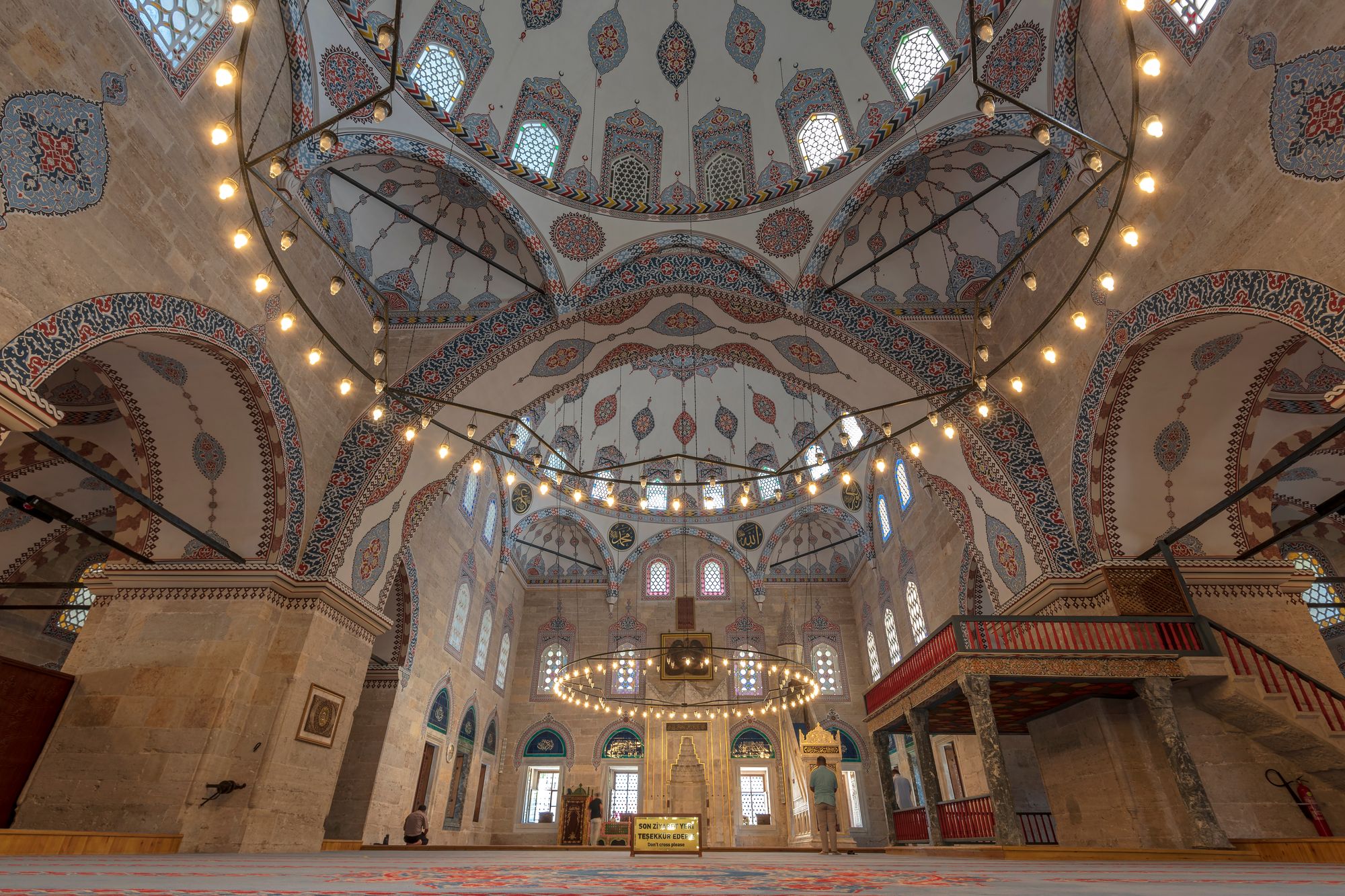
Sultan Bayezid II (reigned 1481-1512) served as governor of Amasya for 27 years before ascending the throne, and although he also has a very fine mosque dedicated to him in Istanbul, it is this mosque - built during his reign and overseen by his son Şehzade Ahmet who took over the area's governing role - that is most notable.
Kastamonu
Anyone interested in the craftsmanship of mosque interiors should make a special trip to the Mahmud Bey Mosque. Built in 1366, this modest-looking mosque in the hamlet of Kasaba (17 kilometres from the city of Kastamonu) is one of the finest surviving examples of painted-wood mosque interiors in Türkiye.
Inside, the wooden ceiling, wooden columns, and ornately carved wooden gallery are all covered in intricate floral and geometric painted patterns that are discoloured but well-maintained.
The mosque's intricately carved door is a replica of the original on display in the Kastamonu Ethnography Museum.

Manisa
As with all the greatest imperial mosque projects built by his father and grandfather before him, the Muradiye Mosque (Muradiye Camii) was also designed by the famed architect Sinan.
After Sultan Mehmed III (son of Sultan Selim II; reigned 1595-1603) took over the rule of the Ottoman Empire, he commissioned this mosque in the town of Manisa, where he had previously been governor.
It is particularly well known for the introduction of high quality Iznik tile work that covers the interior, particularly the tiled minaret, illuminated by stained-glass windows.

Üsküdar
Türkiye has plenty of modern mosques and nearly all follow traditional Ottoman architecture. However, the Şakirin Mosque (Şakirin Camii), in the Istanbul neighbourhood of Üsküdar, is one of the best places to see a mosque that eschews traditional style.
The architect Hüsrev Tayla and interior designer Zeynep Fadıllıoğlu collaborated to create this completely contemporary and unique design in 2009.
The prayer hall impresses with its acrylic dome and huge chandelier of water drop-shaped glass globes surrounded by glazed walls with ornate calligraphy panels.

Wherever you choose to visit, you are sure to find a halal-friendly hotel, villa or apartment on halalbooking.com which will allow you to be mesmerised by still standing minarets with arching details and patterned ceilings, highlighting mosques and their architectural designs as excellent models of merged styles.
